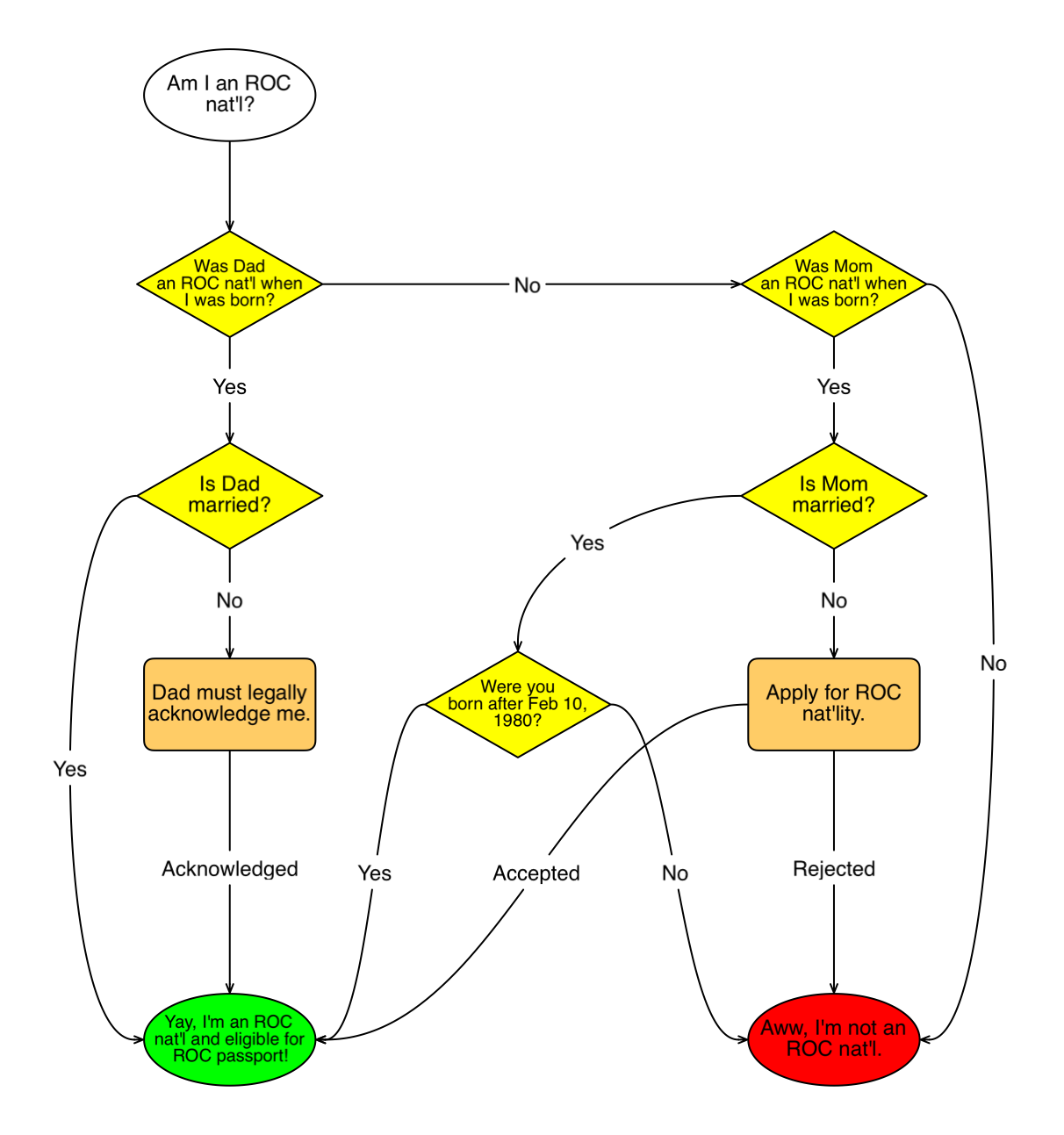How I became a Taiwanese citizen, part 1
Not sure if you’ve heard, but the current American president is off his rocker. So I got serious about getting my Taiwanese citizenship to open up my global options. Because a friend who’s also American-born and has parents who are Taiwanese citizens is interested in the process, I’m starting a series of posts about my experience.
Taiwan is known as the Republic of China (ROC), which is not the same as China, known as the People’s Republic of China (PRC). Although I’m not currently a Taiwanese citizen, I was born an ROC national (國民, guómín). Are you one, too?

Okay, now you know whether you’re an ROC national: if so, you can level-up to a citizen after following the right steps and residing in Taiwan for one continuous year. Note that these requirements are applicable for those aged 20 and over: if you’re 19 or younger, you’re considered a dependent and can become a citizen through shuffling paperwork instead. Also worth noting is if you’re male and 19-36 years old, you’ll need to deal with Taiwan’s practice of conscription to serve in the military for a year.
Taiwan distinguishes between registered nationals (有戶籍國民, yǒu hùjí guómín) and unregistered nationals (無戶籍國民, wú hùjí guómín), also known as nationals without household registration (NWOHR). Household registration is a government system that originated in China, under which citizens must be registered (戶籍, hùjí) under a household (戶口, hùkǒu). In my case, my parents are registered under the same household, which is physically manifested as a household register booklet (戶口名簿, hùkǒu míngbù or 戶籍謄本, hùjí téngběn). It includes information like your name and birthdate, your spouse’s name and birthdate, your parents’ names, and your primary address. Both kinds of nationals are allowed to hold an ROC passport, but only registered nationals have citizenship, while unregistered nationals can be deported and need an entry visa to enter the country. To transition from unregistered to registered national, start the process as follows:
Step 1: No-identification Taiwanese passport
The first milestone is getting what’s called a no-identification Taiwanese passport. You cannot get it in Taiwan: you must apply for it abroad through a local Taipei Economic and Cultural Office (TECO, referred to as 駐外館 zhùwaìgūan), which serves as a de facto Taiwanese embassy. I used the one in Houston since my parents live in Texas, and they had much of the supporting documentation needed:
- Passport application form, signed by the applicant (that’s you!). Note the following questions:
- Once a bearer of a Republic of China (Taiwan) passport or not? No, and don’t fill out the fields concerning it.
- Credential No, Date of issue, Date of expiry – fill in your US passport number and corresponding dates.
- 2 passport photos taken within the past 6 months (must meet these requirements)
- Entry permit application form
- 2 passport photos taken within the past 3 months (must meet these requirements)
- Supporting documentation to confirm that the applicant is a legitimate child of a Taiwanese parent
- Original (if available) and copy of Taiwanese household registration booklet or Taiwanese national identity card of at least one parent
- Original (if available) and copy of parents’ marriage certificate: if issued outside of Taiwan, you must have it translated into Chinese (DIY is okay): send both to TECO to verify and notarize (US$30**)
- Original (if available) and copy of your original birth certificate and Chinese translation (DIY is okay): send both to TECO to verify and notarize (US$30**)
- Passport application fee of US$45**
- One self-addressed stamped priority mail envelope, large enough to hold all of your original documents, including your new no-ID passport
** Make all payments using a cashier’s check or money order made out to your local TECO (e.g., TECO Houston).
Stay tuned for the next step toward Taiwanese citizenship in a future post. If you have any questions, please leave a comment below.
Update on 2017-03-02: Added note regarding conscription for males of military age.